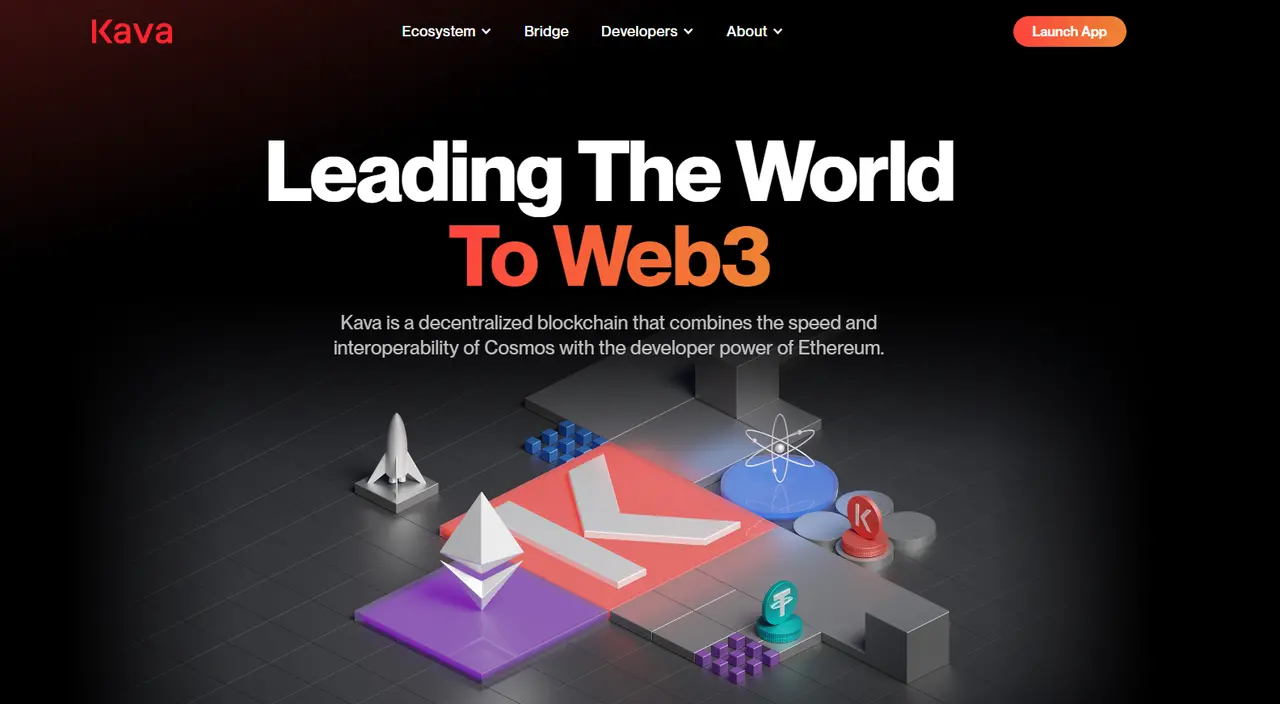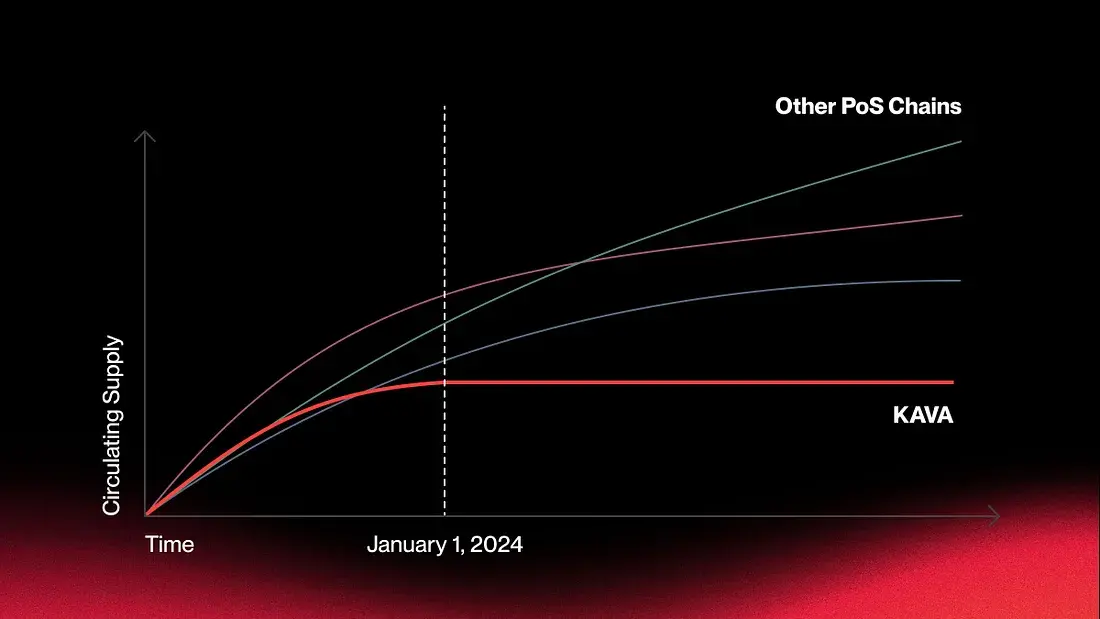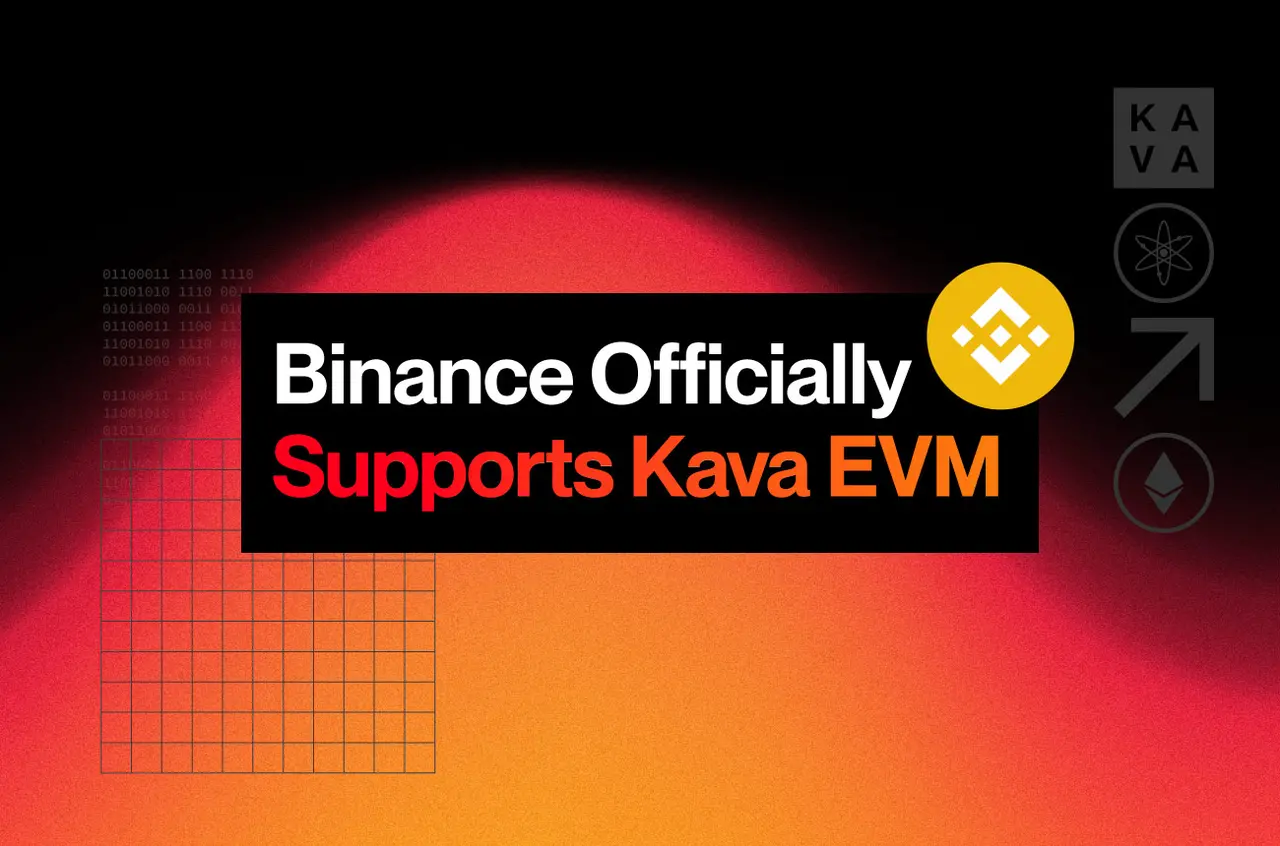Can DeFi projects spanning the two leading public chains of Web3 achieve the vision of cross-chain connectivity?
On March 18, the globally renowned cryptocurrency exchange Binance announced the completion of the integration of Kava (KAVA) into the Ethereum Virtual Machine (EVM) network, while also opening up deposit and withdrawal services for KAVA and USDT on that network.
This integration not only showcases the technological advancements of the Kava ecosystem but also strengthens its competitiveness in the field of financial innovation, bringing higher security, scalability, and interoperability to users and developers. Subsequently, DWF Labs, one of Kava's USDT suppliers, expressed support for Binance's integration.

The following text introduces this event and the main character behind it, Kava.
Kava Chain: Growing Stronger with Multiple Advantages in the DeFi World
Kava's journey began in 2017, with the initial goal of achieving cross-chain payments. Over time, Kava flexibly adjusted its strategy, delving into the DeFi space and solidifying its leadership position within the Cosmos ecosystem through partnerships with key players like Ripple. The transformation into an EVM-based interoperability layer 1 blockchain marks Kava's strategic redefinition of its future positioning, laying the groundwork for it to stand out in the fierce competition of the L1 ecosystem.
On January 1, 2024, Kava Chain implemented Tokenomics 2.0 through community governance proposal 141, marking a significant shift towards fixed supply and reflecting a continued commitment to decentralization. This transformation ended inflation and established a fixed supply of approximately 1 billion KAVA tokens, balancing network security and staking rewards through strategic treasury management, thereby providing long-term value to the community.

The future of Kava Chain is built on strategic goals such as enhancing chain throughput, improving protocols already deployed on Kava, and establishing meaningful communities within the Ethereum ecosystem. Specific measures include shortening block times, increasing transaction throughput, and introducing EVM-native liquid staking derivatives, aimed at attracting more users to use Tether (USDT) as a primary collateral, further driving ecosystem growth.
Compared to other Proof of Stake (PoS) blockchain ecosystems, Kava's Tokenomics 2.0 demonstrates its innovation and leadership in the PoS field. Compared to tokens like ETH, SOL, and ATOM, KAVA's fixed supply and community-driven governance model highlight its scarcity and commitment to decentralization. By shifting to a zero-inflation model and implementing novel staking reward mechanisms, Kava not only enhances the appeal of its tokens but also provides a blueprint for sustainable growth and stability in the future of Web3.
Detailed Explanation of Kava's Technical Logic and Implementation Framework: Co-chain Architecture Facilitates Interoperability Between Cosmos and ETH Chains
The co-chain architecture adopted by the Kava network is its most notable feature, perfectly combining the speed and scalability of the Cosmos SDK with the robust support of the Ethereum developer community. Through this innovation, the Kava network has become the first blockchain platform to truly achieve seamless interoperability between the Ethereum and Cosmos ecosystems. This not only provides developers with unprecedented flexibility to build applications in any desired environment but also allows them to maintain access to other users and assets without compromise.

Kava's co-chain architecture connects two different execution environments through a translator module, enabling developers from both the Cosmos and Ethereum ecosystems to build and deploy their projects within a unified network. This architecture not only promotes interoperability between the two ecosystems but also allows assets and projects to flow freely within the Kava ecosystem, greatly expanding possibilities for users and developers.
The uniqueness of the Kava network also lies in its optimized architecture and high-speed Tendermint Core consensus mechanism. This architecture enables Kava to handle large-scale transactions and interoperability requests while maintaining efficiency and security. The introduction of Tendermint Core not only ensures rapid network response but also provides Byzantine fault tolerance, enhancing the network's security and stability.
KAVA tokens play multiple key roles within the Kava network, from staking and governance voting for validator nodes to being part of network incentive measures. These various uses collectively maintain the network's security, promote governance participation among participants, and encourage the continuous development and expansion of the ecosystem. KAVA's use cases reflect the important role of tokenomics in ensuring network operation and driving ecosystem growth.
The Kava network employs an innovative developer incentive mechanism, managed through Kava DAO, a fully decentralized autonomous organization. This mechanism ensures the network's autonomy and transparency while incentivizing the best builders within the ecosystem. Through on-chain incentives, Kava can directly reward projects and individuals that contribute to the ecosystem, further promoting the healthy development of the network and ecosystem.
These theoretical foundations and architectural features of the Kava network together constitute its unique competitive advantage, providing developers and users with a secure, efficient, and interoperable blockchain platform. Through these innovations, Kava not only fosters cross-ecosystem collaboration but also opens up new possibilities for the advancement and application of blockchain technology.
Further Ties with Binance: Kava's Development Prospects Attracting More Market Attention
Since its founding by Kava Labs in 2018, Kava has been a pioneer in decentralized finance and blockchain technology innovation. Co-founded by Ruaridh O'Donnell, Brian Kerr, and Scott Stuart, the project raised $3 million through a token sale on the Binance exchange in 2019, marking the beginning of early collaboration between Kava and Binance. This sale successfully sold 6.5% of the total supply of KAVA, injecting critical funding into Kava's development.
With the launch of the Kava lending protocol on the Cosmos platform in August 2020, allowing BNB to be used as collateral for USDX crypto loans, Kava demonstrated its strength in the DeFi space. Since then, Kava has recorded over $8 million in USDX loans and locked approximately $24 million in BNB as collateral, showcasing the robust vitality of its ecosystem and the high level of market trust.
On March 18, 2024, Binance further deepened its four-year partnership with Kava by officially supporting the Kava EVM and the integration of Kava's native USDT. This move allows Binance's over 182 million users to seamlessly join the Kava ecosystem, further promoting the adoption of Kava's native products and the widespread use of the ecosystem. This integration places Kava among the elite L1 platforms that simultaneously possess native USDT integration and comprehensive support from Binance.

Kava's success is attributed not only to its advanced technology and strong ecosystem but also to its close collaboration with Binance. Through the Binance platform, the transfer of Kava's native digital assets such as KAVA, USDT, and WBTC has become more convenient, bringing unprecedented levels of liquidity and user base to Kava. As the largest exchange globally, Binance's vast user base has become key to accelerating the broader adoption of the Kava ecosystem.
This renewed collaboration between Kava and Binance is not only a new milestone in the relationship between the two companies but also an important step forward for blockchain technology. As the Kava ecosystem continues to expand, its partnership with Binance will undoubtedly bring more opportunities and conveniences to users and developers, jointly promoting the future development of blockchain technology.
A Series of Important Actions Underway: Whether KAVA Can Steadily Rise as Expected Remains to Be Seen
With Kava (KAVA) successfully launching the KRW trading pair on Bithumb and establishing a strategic partnership with DWF Labs, Kava Chain has already demonstrated its strong growth momentum and market recognition at the beginning of 2024. These developments not only provide Kava with broader market access and enhanced liquidity but also signify its elevated status in the global blockchain arena. Particularly, the collaboration with DWF Labs is expected to greatly promote the development of Kava's DeFi ecosystem, especially in the DEX sector.
Kava's native DeFi lending project, Hover, further proved market confidence in Kava ecosystem projects through its successful public sale on DAO Maker. This fundraising event not only provided funding support for Hover's development but also attracted more attention from users and developers to the Kava ecosystem, likely driving innovation and growth in the DeFi lending space.
In summary, Kava is gradually showcasing its potential as a leading Layer 1 blockchain platform through continuous technological innovation, deepening partnerships, and broadening market access. Looking ahead, the Kava ecosystem is expected to continue playing a significant role in advancing decentralized finance, providing value-added services to users and promoting the prosperous development of the entire blockchain industry.









